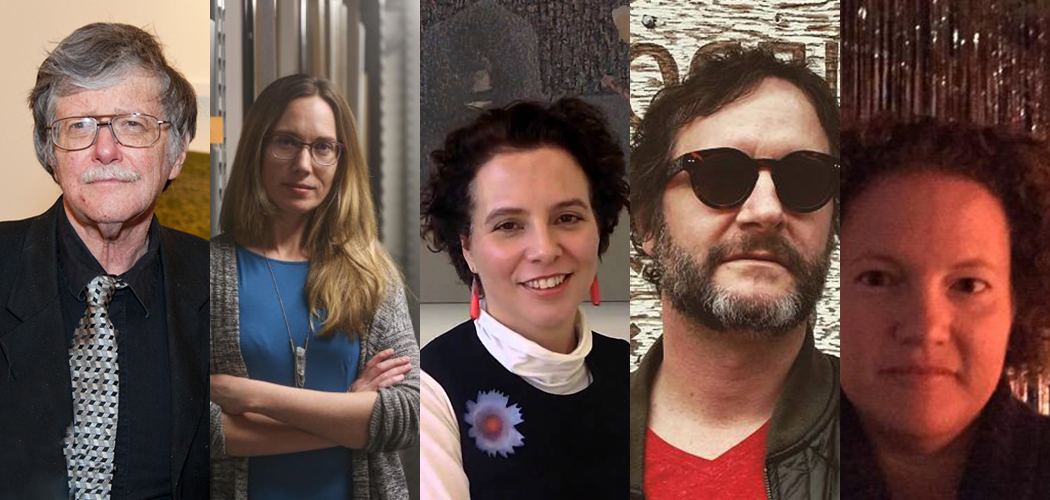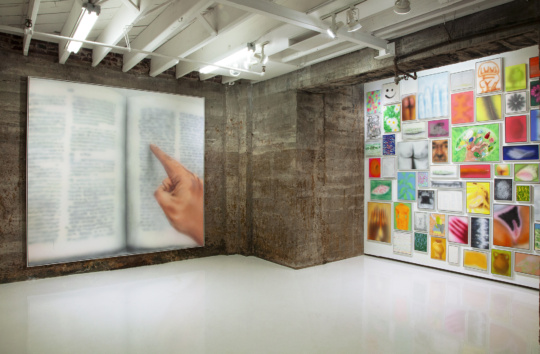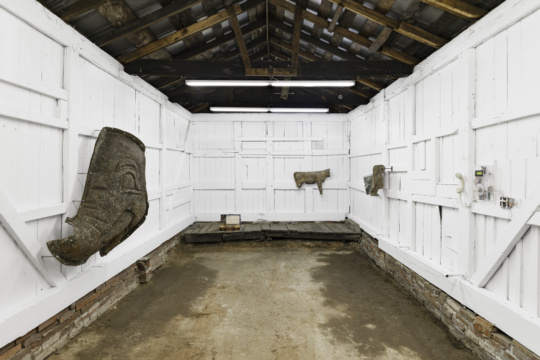
For the second installment of our column “5×7” — in which we pose seven questions to five people who have similar careers, practices, or interests — we asked art critics about the role and future of art criticism, the challenges of working as an art critic, what writers they admire and who they are reading now, why they chose to be an art critic, and their top picks for the 2016 Oscars. We are pleased to have participating critics Jerry Cullum, an Atlanta-based freelance curator and critic, whose writing has appeared in such national publications as Art in America and Art Papers; Megan Voeller, an art critic for Creative Loafing Tampa and the education curator at the University of South Florida Contemporary Art Museum; Houston-based writer and critic Rainey Knudson, founder of Glasstire, a non-profit online journal about the Texas visual arts scene; critic, artist, and musician Joe Nolan of Nashville; and writer and critic Rebecca Lee Reynolds, an assistant professor of art history at the University of New Orleans.

What’s the most challenging thing about working as a critic in your city?
Jerry Cullum: The greatest problem for me is the geographic distance, temporal overlap, and incompatible audiences of opening receptions of venues throughout Atlanta. It is almost impossible to attend in the space of three hours a gallery show on West Marietta Street, a pop-up show in East Atlanta, two events in Buckhead, and three on Miami Circle, much less to understand the nuances of the different aesthetics to which the quite different audiences are responding. It would require an art-educated social anthropologist with a jetpack out of half-century-old cartoon shows.
Megan Voeller: There’s a lot of enthusiasm in Tampa Bay for the arts, broadly construed, but the engagement with contemporary art outside of museums tends to feel anemic and insular. For the decade that I’ve been writing about art here, it has seemed to me that the reason why is a lack of small to mid-size spaces where emerging artists from within and outside of the region could be shown. A notable exception is Tampa’s Tempus Projects.
Rainey Knudson: The weather and the lack of discernible topography.
Joe Nolan: Like most critics I’d love to see more publications and sites interested in publishing critical writing and/or writing about the arts in general. Nashville’s art scene has expanded impressively in the 21st century and I wish there were more publications interested in publishing the writing that’s necessary to foment a substantive cultural discussion about the city’s visual culture.
Rebecca Lee Reynolds: Negotiating conflicts of interest. There’s a fine line between befriending artists and various exhibition organizers in order to understand their intentions while also maintaining a critical point of view that can be negative or positive.

As a critic, whose writing do you admire and/or which critic has been most influential to your work?
Cullum: The late Thomas McEvilley had a huge influence on me. My writing style, which was formed a long time ago and has only deteriorated since, came from cultural critics like George Steiner, Erich Heller, and Susan Sontag. And Walter Benjamin and Karl Kraus, in translation. As to which writers I now admire, James Elkins is about the only one with whom I frequently disagree but who intermittently tackles the right questions and only occasionally tackles the totally wrong ones. As Thomas Pynchon’s Proverbs for Paranoids has it, if They can get you to ask the wrong questions, They don’t have to worry about answers. Eleanor Heartney was another one of my go-to critics back in the day, but these days I am trying to understand the culture and respond to the dynamics of the local scene more than keeping up with who is writing what about a global art scene that is important to study in its own right, but not necessarily in the terms set by critics. Exception: An art-world project, Shumon Basar, Hans Ulrich Obrist and Douglas Coupland’s The Age of Earthquakes, an updating for the digital age of Quentin Fiore and Marshall McLuhan’s The Medium Is the Massage. But those folks are artists and curators and theorists, not working critics.
Voeller: I like—and read—a lot of different kinds of art writing, but I really admire people who write for a general audience. The tension between wit, wisdom and economy required by great newspaper writing is something I find very exciting. I always look forward to a review by Holland Cotter or Peter Plagens. For me the division between reporting and criticism is porous, so let’s count Randy Kennedy’s excellent work as well.
Knudson: Writers: Chaucer, Jonathan Swift, Charles Dickens, Jane Austen, W.B. Yeats, David Mitchell, Allison Weir, and Paul Beatty. Critics: Anthony Lane, Robb Walsh, Christina Rees, Pete Wells, Dave Hickey, and Ellen Willis.
Nolan: I’m most interested in critics who are also artists. Writing by Mike Kelley, Lenny Kaye and Frank O’Hara straddle that line admirably, offering unique perspectives that I don’t think critics-only can supply.
Reynolds: Lucy Lippard and Rosalind Krauss. Two very different voices, but both strong and unique (and I don’t think it’s irrelevant that they’re both women). I fell in love with Lippard’s first-person approach and her commitment to place and locality while reading The Lure of the Local, while Krauss’s intellectual depth and strength of argument have always inspired me.
What made you want to be an art critic? Are you also an artist?
Cullum: A lot of the questions I was pursuing in contemporary culture and past history overlapped with visual art. When I found myself persuaded to start reviewing artists who didn’t come with secondary literature already attached, I decided to start making some of the sort of art that I wanted to see but was not seeing—first painting, then theory-based conceptual art incorporating painting, sculpture, and design. I sometimes consider myself a sometime artist, kind of like the Mashpee in James Clifford’s The Predicament of Culture, who sometimes seem to be a tribe, sometimes not, then a tribe again, and other times completely undecidable.
Voeller: This will sound naïve, but I swore off making objects as an undergraduate after traveling around the world and coming back disgusted by how much stuff we produce and consume as Americans. Sometime after that I started to think of my interest in art in terms of facilitating others’ engagement. I don’t use the word artist to describe myself, but I’m keenly aware of having a practice with aesthetic and social-political dimensions.
Knudson: It was always in my heart to be a writer, and I’m naturally critical by nature and not given to telling stories. My mother used to be an art dealer, so I grew up around the Houston art scene. I remember being taken as a young child in my Sunday school dress to see a Julian Schnabel show and standing very close to the broken plates on the canvas because I thought that was how you’re supposed to look at art. As an adult, art kept pulling me back in, or I would have left for a job in the oil patch a long time ago. I am not an artist, which I think is both an advantage and a disadvantage in this line of work.
Nolan: As an artist you’re constantly crafting for, communicating to, and connecting with your audience. As a journalist or as a blogger or as podcaster. I try to illuminate and share the ideas, images and sounds that capture my imagination, make me think, make me laugh, and inform my own creativity. All artists research and analyze and codify their process in one way or another. I do too, but I also publish it. So the journalism is an extension of my creative work: it’s my process turned inside-out.
Reynolds: I’m not also an artist, but I’m also an art historian, and I have been accused of writing art history more like a critic than a historian. My writing projects as an art historian are long-range projects. One thing I like about art criticism is that projects can be accomplished in shorter time frames, that it keeps my writing active and an ongoing habit (thus feeding the longer-range projects), and that it allows me to respond to art being made now, rather than looking back on art from a historical point of view. Wait, that’s more than one thing!
What is the role of art criticism and what is its future?
Cullum: I have given up worrying about that question. I have too many deadlines to meet, and too many essays to write and works of art to make when not meeting deadlines.
Voeller: The role of art criticism is to engender a civic conversation about art and its meaning(s) in the context of our lives. Its future is to carry on.
Knudson: Its role is to rid the world of bad art. Perhaps it will succeed in the future. Hope springs eternal.
Nolan: Generally, criticism brings an informed voice into the shaping of the cultural conversation. I don’t think my role is a pedantic one, but a perturbing one — I’d rather inspire others to look and feel and think and talk rather than convince them to agree with me. However, the prerequisite for every critic should be a point of view that’s rooted in a personal aesthetic philosophy. I hope that my twelve years worth of writing about the visual arts, film and music could be assembled into a whole that would reveal the clear, clean, and well constructed system of ideas that has informed it. Of course, the philosophy also evolves with the writing. I suppose that’s where the real value writing criticism is for me – it’s made me a better thinker and a better artist.
Reynolds: What makes me a critic is that, I think, making and showing art is kind of pointless without having a conversation about that art. The art critic is the one who puts the visual experience into words in order to start the ball rolling on a broad conversation. In a way, it’s a form of modeling. But it can also be about connecting the art to conversations already happening in the culture. I have no idea where that will go in the future. At one point I think everyone assumed that the internet would make art criticism more of a populist venture, but that does not seem to have panned out.

What are you reading now?
Cullum: All pleasure (after spending 2015 reading dozens of books I didn’t always want to, for writing a textbook chapter on outsider art and the commissioned essay “History of Religions and Cultural Fashions Revisited,” now posted on academia.edu for the curious): Terry Eagleton, Culture and the Death of God and Hope Without Optimism—pleasure reading now that they don’t have to be accounted for in an essay; Michael Peppard, The World’s Oldest Church: Bible, Art, and Ritual at Dura-Europos, Syria—who can resist the oldest known painting of the Virgin Mary?; Artist and Empire, catalogue of a show at Tate Britain including the late Atlanta artist Donald Locke; Benjamin Woolley, The Queen’s Conjuror: The Life and Magic of Dr. Dee—prepping for a 2016 John Dee exhibition in London I hope to view; and eventually I hope to get around to reading the copy of Patti Smith’s M Train I acquired at her Variety Playhouse reading and concert. Plus a two-foot-high stack of books I have been intended to read since approximately 2012.
Voeller: For work, I’m reading everything I can get my hands on about climate change and the Anthropocene, which will be a theme in our fall exhibition at the USF Contemporary Art Museum. For pleasure, I’m reading—what else?—the Elena Ferrante novels, but also Carl Rogers’s On Becoming a Person. The latter goes deep into reflective listening and neutrality in the context of psychotherapy. These are two skills I’m trying to cultivate as a critic (who listens before judging), educator, and person.
Knudson: T.S. Eliot. Great poetry; kind of a dick as a person.
Nolan: I’m a huge fan of the Flipboard app and I begin and end most days with articles aggregated from publications and topics that I’m interested in. Todays topics include: An article about a drug that’s 10,000 times more powerful than morphine, a piece on the Pentagon’s secret pre-crime program, photography of Soviet ruins, a literary bio of Dashiell Hammett, and a look back at Dada on its 100th birthday. I also read a lot about film and I’m currently reading about Robert Frank’s work as a filmmaker.
Reynolds: I’m teaching a class about the history of photography this semester, so I’ve been digging into readings about photography history and theory. Going through Roland Barthes’s Camera Lucida again was great. For academic fun, I’m reading Sally Mann’s memoir Hold Still.
What other art forms influence your writing?
Cullum: Experimental fiction, most of it no longer very experimental; poetry, both classic and contemporary; and word-dominated conceptual art.
Voeller: Jazz and food! I listen to jazz every day, and I love to cook and to eat. The awareness and improvisation involved in cooking (and tasting) is a lot like the attunement to visual art that being a critic is all about. And I really believe good bourbon cocktails are an art form. You can only write well if you’re living well.
Knudson: We are living in a golden age of television. I also listen to a lot of music.
Nolan: Feel like I’ve mostly covered this one already.
Reynolds: I think of my writing as a sculptural enterprise. I’m a very spatial thinker, and my main field of research has been the history of sculpture. I think of my paragraphs as little tiny sculptures, and editing as a process of shaping those objects. A friend who had a background as a painter once shared that he thought of his writing as a series of brushstroke word choices, but I tend to think at the level of the paragraph instead of the word.

Who and what are your Oscar picks for this year?
Cullum: Since the only movies I managed to see in 2015 received no nominations for anything whatsoever, I have no opinions about this (to quote Fat Charlie the Archangel from Paul Simon’s Graceland, which I ended up listening to for the first time in decades during the long airplane flight on which I also watched the only three 2015 movies I had time to look at in 2015).
Voeller: You know, I’m trying to feel interested, but it’s just not working.
Knudson: I have a second grader. The only film I’ve seen that’s nominated is Inside Out. So, Inside Out?
Nolan: I write a weekly film column so this one has been on my mind. Not exactly sure of my picks yet, but I’d like to see Stallone win for Creed – he was great and that movie was one of the year’s best. I was shocked that Carol wasn’t nominated for Best Picture – it’s a practically perfect film. The Big Short will win Best Picture. Inside Out deserves its inevitable Oscar. Leo will get his statue whether he deserves it this year or not. I’d love to see Ennio Morricone win for Best Original Score.
Reynolds: I haven’t seen any of the nominated movies this year! I really enjoyed The End of the Tour and Love & Mercy last summer, but neither was nominated. But I always watch the pre-show for the dresses, applying my inner critic to the fashion choices.




